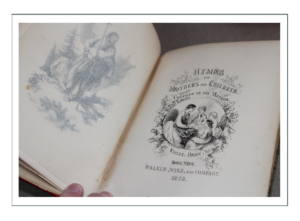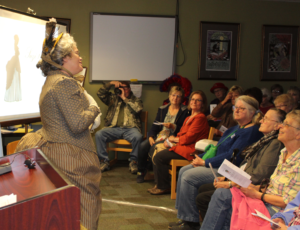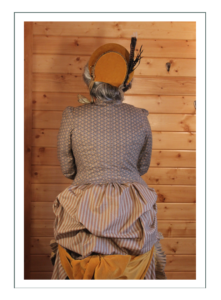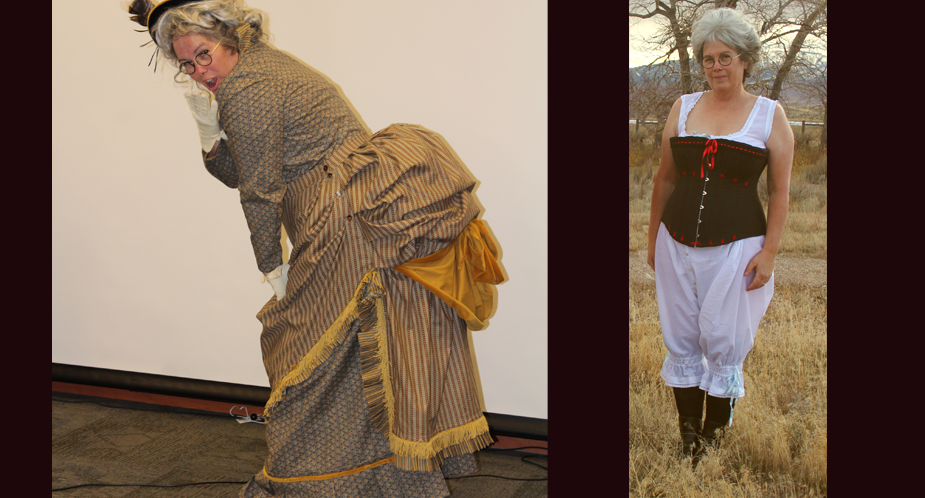… is a depiction of an actual woman who lived in Sundance, Wyoming. The idea is to bring the high fashion ideals of the day which were centered in the southeast, to a western “low” fashion interpretation.
The reason this is important is that in 1883 the United States was kind of “split” between the extremely well developed and highly technical east coast, and the big jump to the western states which were rustic, rough, and difficult to get to. Completion of the transcontinental railroad in 1870 had a lot to do with this, as old trails and roads became paved and covered with tracks.
There were still areas that could not be reached by major transportation routes, however, and the northeastern Wyoming and western Dakotas were such places. You had to leave the train to take spurs or stages north through territory still populated by indigenous tribes.
The Deadwood, SD region and areas east of the Big Horn Mountains were notorious for outlaw hideouts, stagecoach robberies, and bordellos. The 1880s’ “Wild West” legends of international acclaim at the time – your “Big Nose Kates” and “Sundance Kids” – largely referred to this area and era.
It was also a time of real factual conflict between large ranchers and small farmers.




Suzi’s character, intent on “saving the souls of sinners, outlaws, and cowboys” would rise to meet the challenge in leaving her comfortable home and family in the south to follow her husband to preach the gospel in this wild territory. She would settle in Sundance, on transportation lines, with newspapers, and with enough goods available to live somewhat comfortably. Most western women still made their own soaps, candles, and daily goods although they were readily available out east. It was a “make do” world for women at that time.
She would bring knowledge of fashion with her, and try her best to keep up with it. Her eastern sisters would be focused on new hats and the large bustle coming into fashion, so the character would most likely get, make, and modify whatever she could to be in fashion. She would as representative of her husband, be the fashion leader of the town.
In reality her many drapes and layers would be interchangeable and washable, so that it appeared to be fresh and new, whereas in reality she was probably making over her hats or bodices while wearing the same old undergarments and skirts.
Interpretation of this character emphasizes Silhouette’s concept for design that women wore what was “accessible, available, and affordable given the information at hand”. The Preacher’s Wife would be the most stylish one saying a prayer at the funeral of a notorious outlaw. Of course, she might have been the only one saying a prayer at the funeral of a notorious outlaw.

